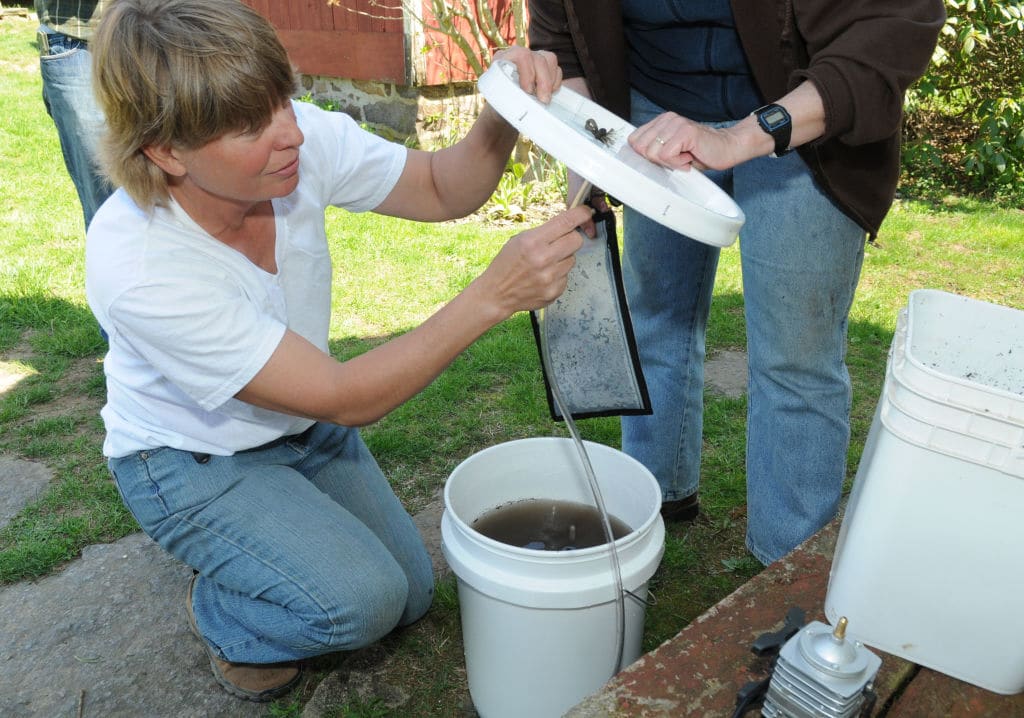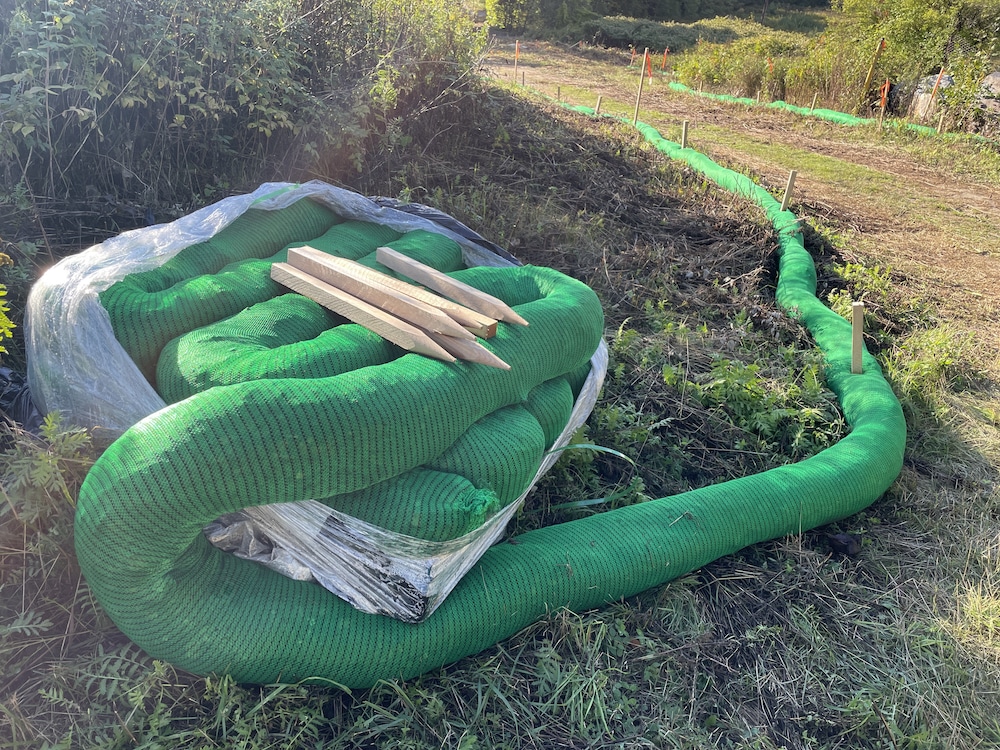
When food scraps are thrown into a landfill, they decompose anaerobically and create methane: a climate-warming greenhouse gas. When food scraps are composted, however, not only are they kept out of landfills, but they turn into nutrient-rich organic matter that can fertilize next season’s plants. You can compost anywhere — even in an apartment or somewhere without outdoor space — but once your food scraps have transformed into beautiful, finished compost, what do you do then? Not having a garden doesn’t mean you can’t put that compost to good use.
First, Make Sure It’s Ready

Make sure your compost is ready to leave the pile before using it. Temperature is usually a good indicator of whether the compost is ready — it’ll be warm to the touch when it’s still decomposing, and cooler when it’s ready. Check for a dark, crumbly, soil-like texture too, and an earthy smell rather than a decomposing-food-scaps smell. Screening your compost before use is also a good practice. Use a sifter to filter out any large pieces that didn’t quite break down and throw them back in the pile.
Use It in the Garden

Of course, if you have a garden, it’s very beneficial to spread compost there, where it’ll deliver the nutrients of your once-food scraps back into the soil. It can be used to fertilize existing vegetable and flower beds, or boost nutrient-poor soil so it’s ready for growing. Before planting your starts or seeds in the spring, spread finished compost along the top of the soil — a 3-4 inch layer for new garden beds, and a 1-inch layer for existing beds — then mix it into the top 6-12 inches of soil. If your plants need a little mid-season boost, it’s not too late — a thin layer of compost right over top of the soil around the base of the plants (but not touching their stems) will do the trick. You can also spread a layer of compost on top during the spring or autumn (either before or after the summer growing season) and simply let the nutrients percolate into the soil as it rains. Whatever you’re growing, chances are the plants will love it.
Fertilize Houseplants

Without the natural processes of decomposition and nutrient cycling that occur outdoors, houseplant soil gets depleted of nutrients over time. Instead of turning to synthetic fertilizers, use compost to revitalize the soil of your existing houseplants, or as a soil base for new ones. You won’t want to plant houseplants directly in compost, since it doesn’t have the well-draining, aerated structure that many indoor plants need. Mix it with a store-bought houseplant soil, or create your own mix using coco coir, perlite, vermiculate, and your very own compost. Before potting, look into the specific fertilizing needs of your houseplants, but generally, adding compost once or twice a year — particularly during a yearly summer repot — is a good idea.
Make Compost Tea

Don’t worry, it’s not for drinking.
Compost tea contains tons of beneficial microorganisms — bacteria, protozoa, and fungi among them — as well as soluble nutrients, all of which are conferred to the soil when applied. Additionally, it can serve as a disease-blocker to plants that are already growing, such as powdery mildew that’s the bane of many squash-growers. The beneficial microbes occupy the surface of the leaves, preventing other organisms from crowding in.
There are several ways to “brew” a batch of compost tea — some requiring more extensive ingredients like fish tank aerators, seaweed extract, and fish fertilizer — but to make a simple concoction, you need only a five-gallon bucket, a gallon of non-chlorinated water, 1-2 cups of finished compost, and a compost tea brewing bag (available online, or make one yourself out any kind of mesh material). Put the compost in the bag before placing the bag in the bucket and filling it with water. Store it in a dark, cool place and stir every day for a week. Now, add the tea to indoor and outdoor plants alike and watch them thrive.
Create an Erosion Barrier

If you notice an area of your yard that’s especially prone to erosion after large storms, compost can come to the rescue. Because of its high water-retention capabilities, compost is especially helpful in creating erosion barriers. Either add a layer of compost over the eroded soil — where it works much the same as mulch — or create a physical barrier with a mesh tube filled with the finished compost that sits on top of the soil.
Revitalize Landscaping
Even if you don’t have a garden, compost can still be put to use in your yard. Use it around shrubs and trees to give them a boost of nutrients and help retain water. If you have an unused area of the yard that you want to spruce up (but would rather not spend the time building a garden), mix some compost in with the soil and throw down some native grass or flower seeds. You won’t have to do anything other than sit back and watch them grow, and see the ecosystem of your backyard thrive.
Sell It
Perfectly finished compost is a hot commodity, selling for pretty high prices at garden centers. If you don’t have a use for the compost yourself, someone else certainly does. Check out what local garden stores are charging for compost in your area, and get the word out online that you have fresh, locally-decomposed compost ready to buy.
Donate It
Better yet, find somewhere to give your compost to for free that would benefit from it like a neighbor, local farm, community garden, or school. Even in a large city, there are plenty of urban farms and gardens that use compost. If you can’t find any takers, give your city’s parks department a call and see if they would be able to use donated compost for landscaping the city’s parks.
The post What to Do With Your Compost (Even if You Don’t Have a Garden) appeared first on EcoWatch.
